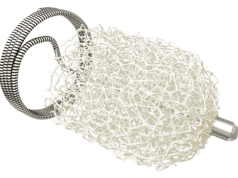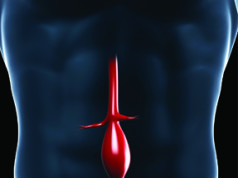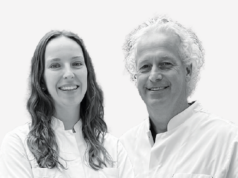
There was general agreement between physicians from across the globe that there is “work to do” in the way abdominal aortic aneurysm (AAA) sac stability is measured and assessed, and in understanding the underlying, biological factors that influence sac stability, at the CX Aortic Vienna 2022 Digital Edition (24–26 October).
Improving on this understanding is “fundamental to the future of our practice”, Ian Loftus (London, United Kingdom) stated during yesterday afternoon’s Abdominal Aortic session.
Presentations seen in this session, including from Marc Schermerhorn (Boston, United States) and Hence Verhagen (Rotterdam, The Netherlands), highlighted data indicating the link between sac regression/expansion and patient outcomes. Both presenters stated that, generally, sac ‘shrinkage’ is associated with lower reintervention rates and better long-term survival, with Verhagen concluding his talk by saying that “sac regression is [probably] a new paradigm for success”.
Following a question from Tilo Kölbel (Hamburg, Germany), Schermerhorn said that, in the research he delivered—as per Society for Vascular Surgery (SVS) recommendations—sac ‘stability’ was defined as growth of less than 5mm, although he added that some variation was seen even within the ‘stable’ subgroup, as patients with 4mm sac growth did not do as well as those with 0mm, broadly speaking. Here, Kölbel noted that relevant European societies define a stable sac through less than 2cm of growth.
It was also pointed out here that, in spite of these trends, “plenty of patients [still] have endoleaks and [sac] regression” too.
Loftus averred that there is very limited evidence, if any, that interventions in these cases are really improving the lives of patients, adding that there is “a large amount of work” required to understand the basic biology behind these cases. As session anchor Roger Greenhalgh (London, UK) pointed out, it may be “a marker for something worse that is underlying”, leading Alexander Zimmermann (Zürich, Switzerland) to query whether a biological marker for patients who will benefit from endovascular techniques will be defined in the future.
In response, Loftus stated that the field may still be “a long way off that” right now and that, while “we can predict those who will do badly, we cannot do [this] preoperatively”.
Transcaval access—challenging but advantageous?
Earlier in the session, Kölbel had presented an edited case using transcaval access—a “technically challenging” access approach—for Type-II endoleak embolisation in a 78-year-old male patient. He reported a good postoperative follow-up at one year with a significant reduction in the size of the patient’s abdominal aortic aneurysm.
Briefly summarising wider results with this approach at his centre, Kölbel noted a 96% technical success rate and a 30-day mortality of zero. He concluded that transcaval access “offers a safe and reproducible access option” in endoleak treatment, and current results are promising and compare favourably to ‘classical’ transarterial access approaches.
The presentation drew compliments from session anchor Greenhalgh, who described it as a “novel” approach that other operators may feel “less comfortable” with—something Kölbel said was “a pity” because it is “such a convenient access” that offers “a number of advantages” in certain cases. Here, he added that it has mostly replaced the transiliac and translumbar alternatives at his centre, but also acknowledged that “every centre has its own traditions”.
Data on new devices
The abdominal aortic session also saw presenters deliver multiple studies of newer technologies in this space. Firstly, Naoki Fujimura (Tokyo, Japan) discussed lessons learned from experiences with a low-profile AAA device. Relaying findings from the Japanese JUSTICE registry, Fujimura ultimately reported pros and cons with this technology.
And, in addition to Verhagen’s aforementioned presentation on how sac regression at one year affects all-cause mortality at eight years, in which he delivered insights from the ENGAGE registry, the session saw Dimitrij Kuhelj (Ljublijana, Slovenia) report long-term follow-up data and durable outcomes with an infrarenal endoprosthesis.
“We should all stress that the latest devices are holding up extremely well,” session anchor Greenhalgh stated, adding that this was underscored by all three of these presentations.
Further discussions on the future direction of AAA sac treatments stemmed from this. While Zimmermann reiterated the concept that endovascular success may be defined by sac shrinkage, Kölbel noted the importance of continued surveillance of the sac as well as the need to intervene if the sac expands. Greenhalgh built on this by noting that “it is not about suspicion—it is about [having] proof” regarding changes in sac stability, and that physicians must be certain it is the correct approach if they are going to stop follow-up imaging of a patient.
“Is follow-up still required until we know more?” he asked Verhagen, who said this is the “million-dollar question”. Greenhalgh further pointed out that one of the challenges here is convincing policymakers that stopping follow-up is a safe strategy.
Here, Kölbel highlighted the fact that imaging modalities in this space should be standardised too, with the global speakers in this session discussing the different follow-up imaging procedures at their centres, revealing some geographical discrepancies including a mix of computed tomography (CT) and duplex ultrasound usage.













